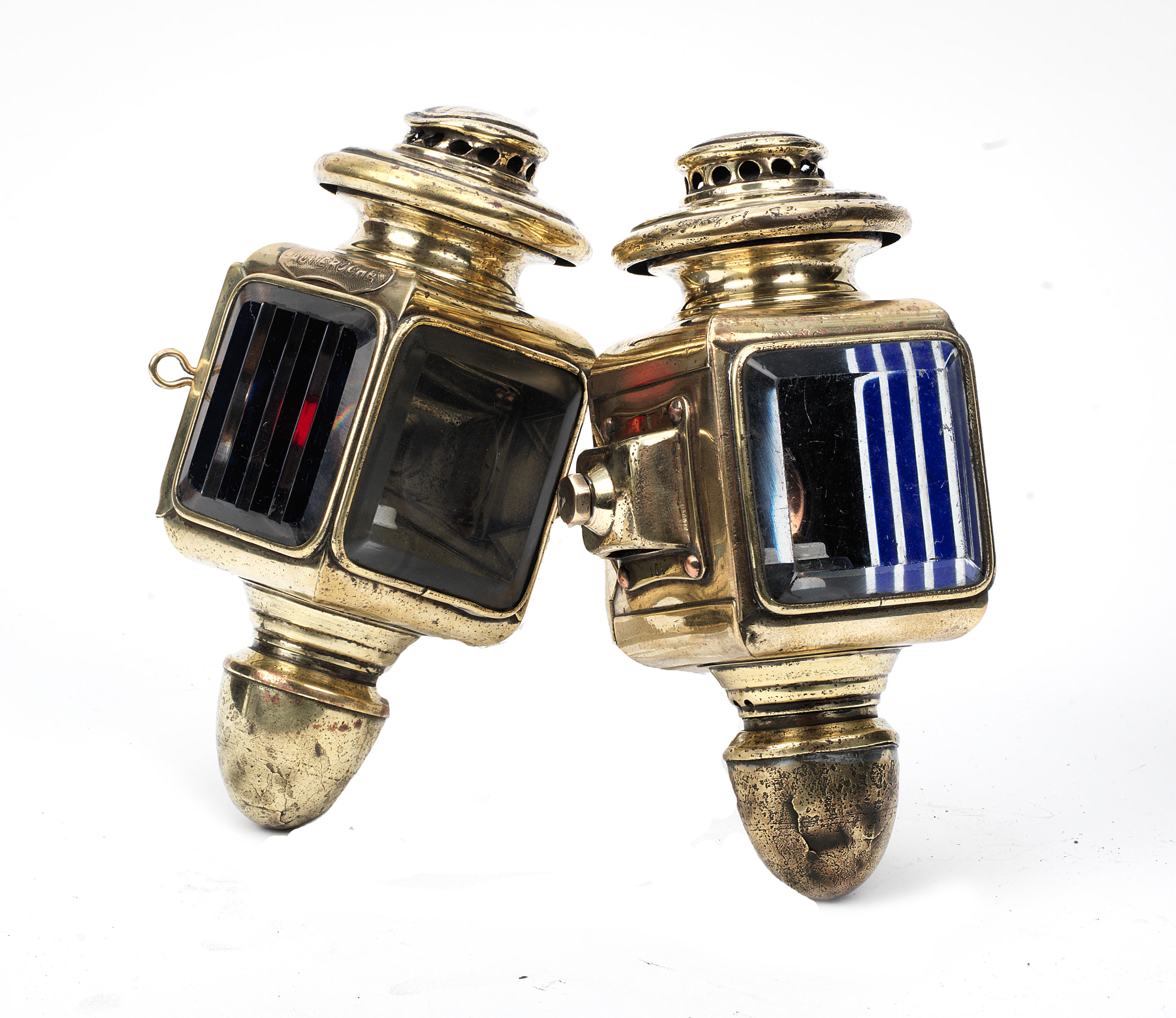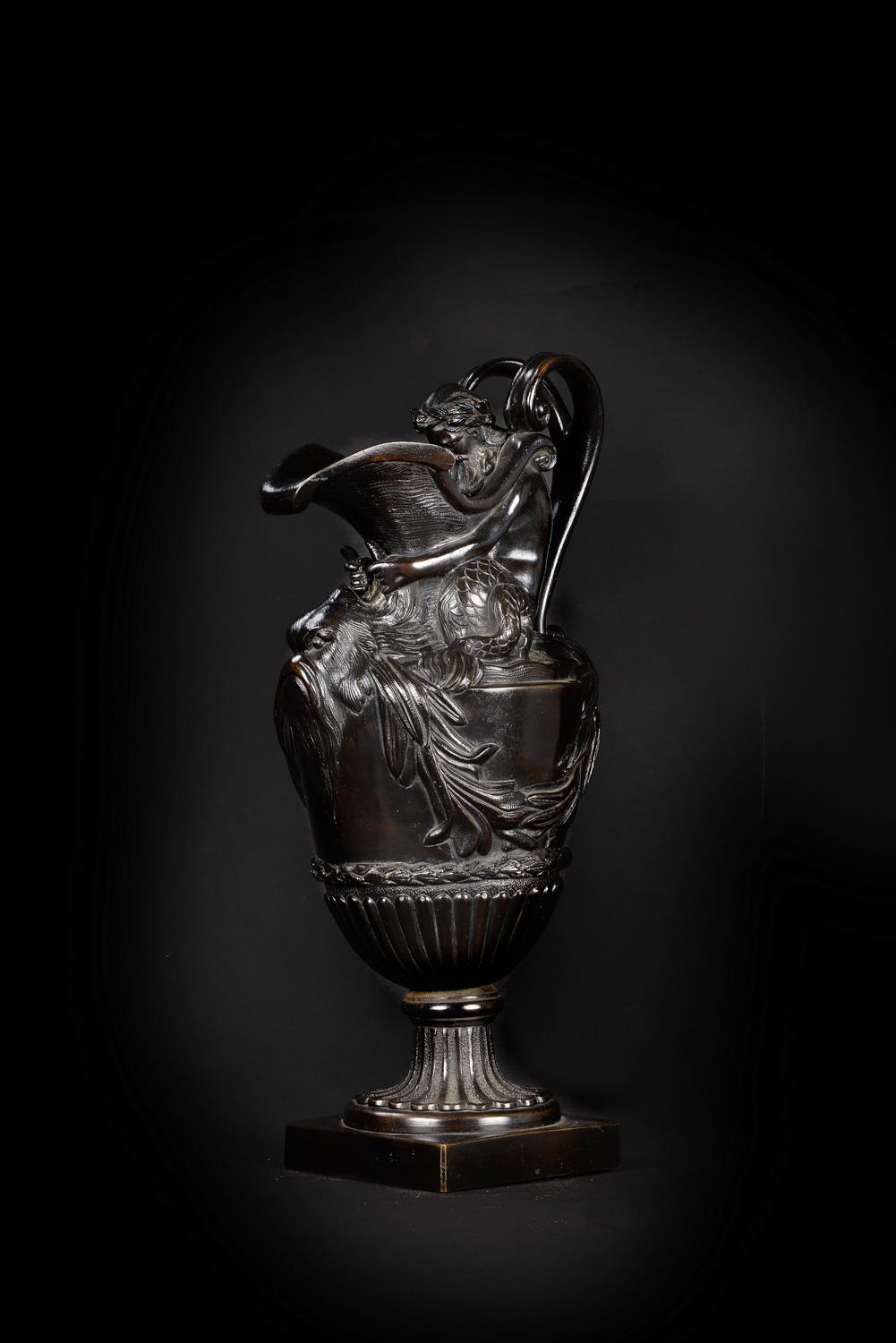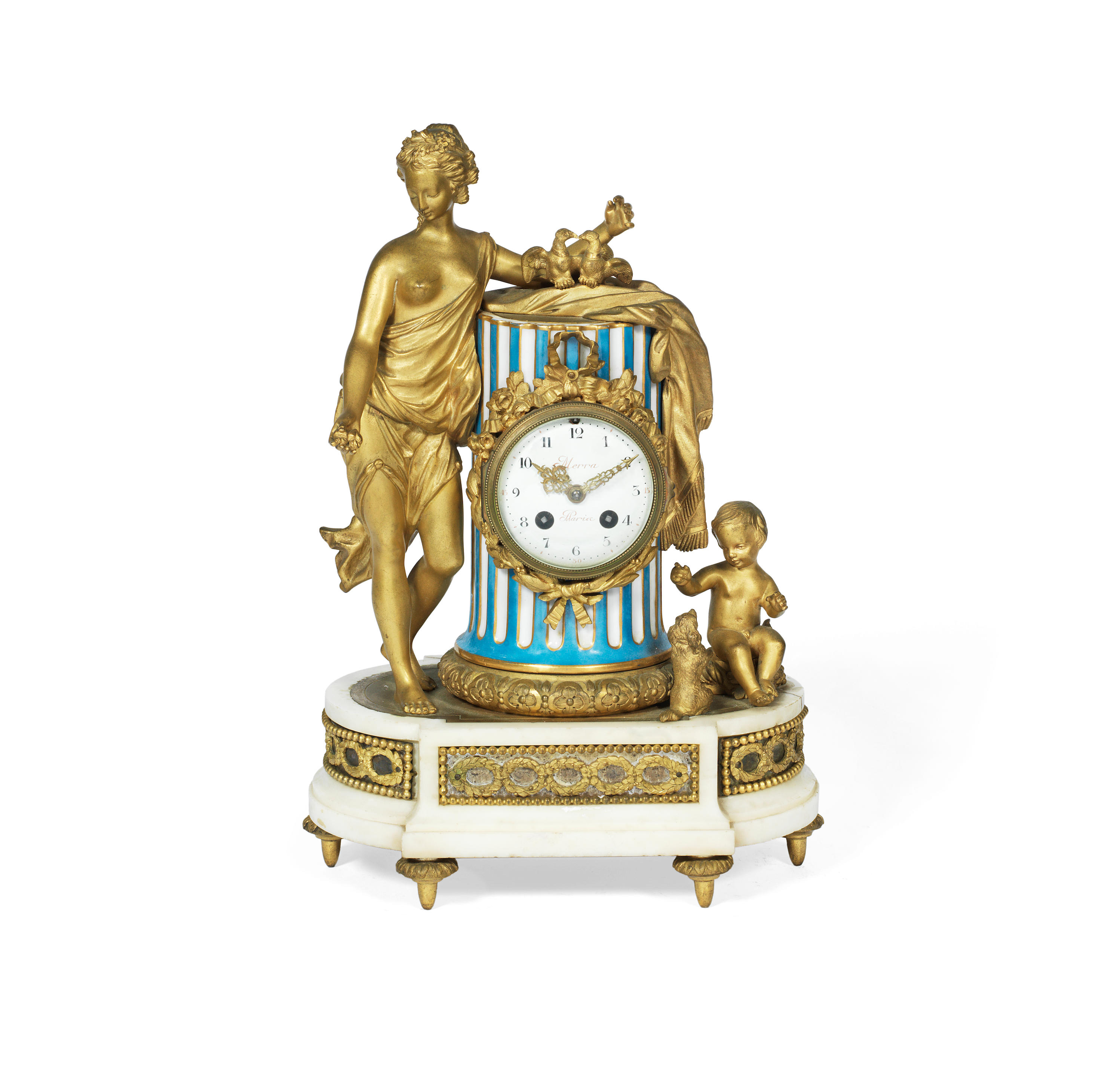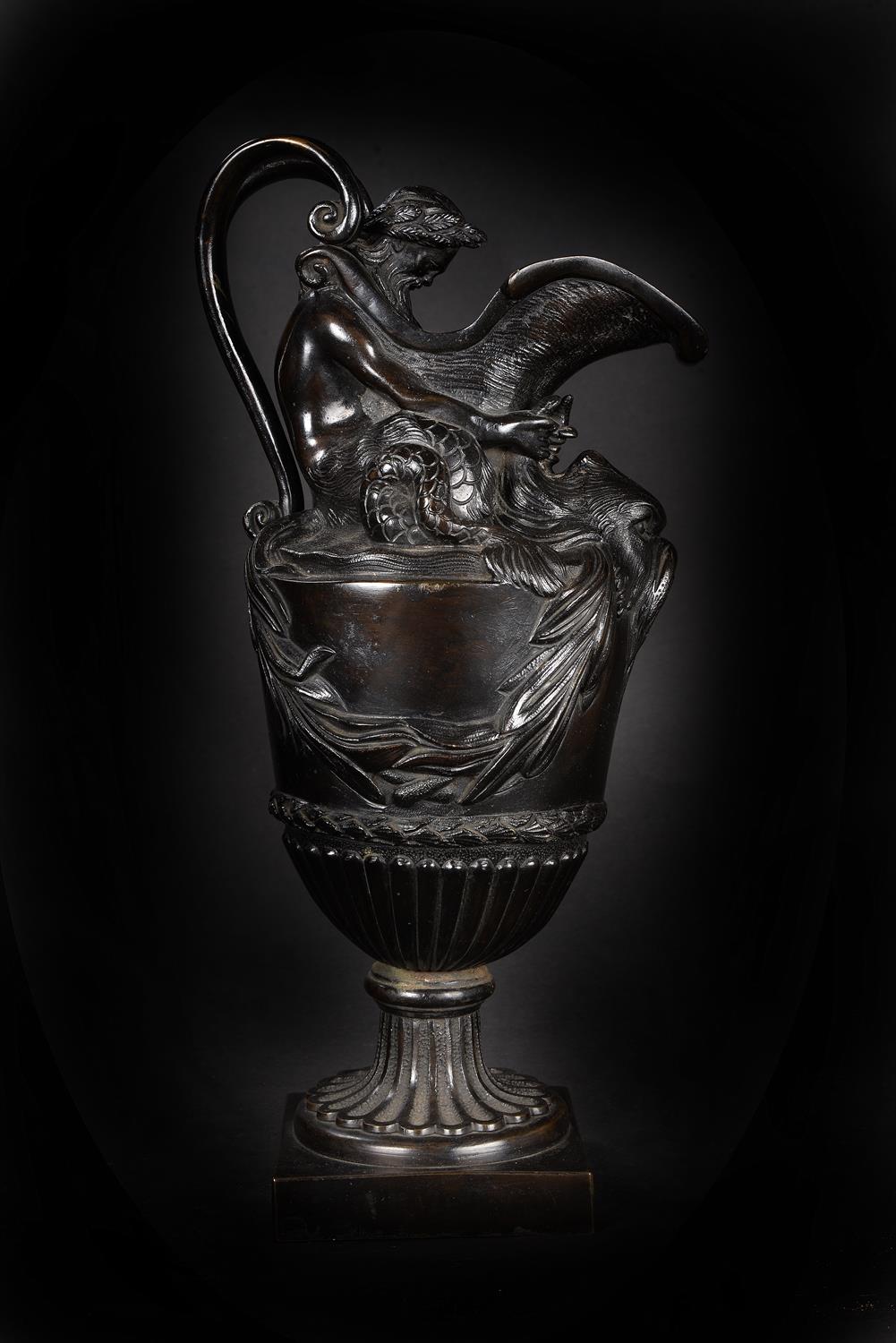French, circa 1680-1700, the model by Gaspard Marsy (1624-1681) and Balthasar Marsy (1629-1674)Latone and her children bronze, light brown patina; on a wood baseH. (bronze) 44 cm, 17½ in.(base) 45,5 by 42 by 8 cm ; 17⅔ by 16½ by 3⅐ in.____________________________________________ France, vers 1680-1700, modèle de Gaspard Marsy (1624-1681) et Balthasar Marsy (1629-1674)Latone et ses enfants bronze à patine brune ; sur un socle en boisH. (bronze) 44 cm, 17½ in.(socle) 45,5 x 42 x 8 cm ; 17⅔ by 16½ by 3⅐ in.Condition reportFor further information on the condition of this lot please contact ulrike.goetz@sothebys.com LiteratureRelated Literature / Références bibliographiquesG. Bresc-Bautier, G. Scherf, Bronzes français de la Renaissance au siècle des Lumières, Paris, 2008-2009, pp. 266-269.F. Souchal, French Sculptors of the 17th and 18th centuries. The reign of Louis XIV, Oxford, 1977, t. III, p. 47, no 19b.Catalogue noteIn 1666 the brothers Gaspard and Balthasar Marsy, originally from Cambrai and sculptors to the King, were commissioned to produce a monumental marble fountain of Latona and her children for the gardens of Versailles, to be sited just below the Parterre d’Eau on the gardens’ central axis. Trained from 1648 in Paris, in the workshops of Jacques Sarrazin and Michel Anguier Gaspard and Balthazar Marsy were admitted to the Académie Royale in 1657 and 1673. The two brothers collaborated on large Parisian building projects, such as the Hôtel Vrillière, the decoration of the façade of the Palais du Louvre and the Galerie d’Apollon, as well as on the Tuileries and Fontainebleau palaces. The bronze shows the goddess Latona (or Leto in Greek) with her children, Diana and Apollo. The subject is taken from Ovid’s Metamorphoses (Book IV): Juno has learnt of the affair between her husband Jupiter and Latona and decrees her pregnant rival’s exile, forbidding any land to host the birth of her children. Condemned to perpetual flight, Latona embarks on an endless journey, but finds refuge on the island of Delos, where she gives birth to the twins Apollo and Diana. During her flight, she arrives parched with thirst in Lycia (Turkey) and stops to drink from a lake, but some peasants prevent her from doing so. Furious, Latona appeals to Jupiter and curses the peasants, turning them into frogs. Completed in 1670, the monumental marble group at Versailles (h. 101cm), positioned at the top of the fountain, illustrates this episode. Latona, kneeling, is pleading with Jupiter, raising her arms to the skies while protecting her children, who cling to her robe. The group is surrounded by two round basins, in which figures of peasants are in the process of turning into frogs, as described in the accounts of the King’s Buildings: ‘Payments reported in the accounts to the same for work under way on a group of Latona and her children, from May 1668 (payment to Gaspard Marsy to May 1670 (payment to Balthasar Marsy)’. […] ‘Payments [received] in full from March to December 1670 for the sum of 5000 livres, for the ‘group of a white marble Latona with two children, Apollo and Diana, and ten figures of peasants changing into frogs, which have been placed in the three basins at Versailles.’ Between 1687 and 1689, the architect Jules Hardouin-Mansart-(1646–1708) made modifications to the fountain, turning Latona to face the Grande Perspective and raising her above the other figures. Placed on a pyramid of four levels, from this time on Latona turned her back on the palace, gazing instead towards the horizon. After the death of the Marsy brothers, Hardouin-Mansart commissioned some new animal figures in gilded lead from the sculptor Claude Bertin (1653–1705) to complete the ensemble. Lizards and tortoises are arranged around the basin at ground level, followed by metamorphosising peasants and frogs on the first step of the pyramid. The two next steps are populated with frogs. Some historians have seen this monument as an allegory of Louis XIV’s victory
French, circa 1680-1700, the model by Gaspard Marsy (1624-1681) and Balthasar Marsy (1629-1674)Latone and her children bronze, light brown patina; on a wood baseH. (bronze) 44 cm, 17½ in.(base) 45,5 by 42 by 8 cm ; 17⅔ by 16½ by 3⅐ in.____________________________________________ France, vers 1680-1700, modèle de Gaspard Marsy (1624-1681) et Balthasar Marsy (1629-1674)Latone et ses enfants bronze à patine brune ; sur un socle en boisH. (bronze) 44 cm, 17½ in.(socle) 45,5 x 42 x 8 cm ; 17⅔ by 16½ by 3⅐ in.Condition reportFor further information on the condition of this lot please contact ulrike.goetz@sothebys.com LiteratureRelated Literature / Références bibliographiquesG. Bresc-Bautier, G. Scherf, Bronzes français de la Renaissance au siècle des Lumières, Paris, 2008-2009, pp. 266-269.F. Souchal, French Sculptors of the 17th and 18th centuries. The reign of Louis XIV, Oxford, 1977, t. III, p. 47, no 19b.Catalogue noteIn 1666 the brothers Gaspard and Balthasar Marsy, originally from Cambrai and sculptors to the King, were commissioned to produce a monumental marble fountain of Latona and her children for the gardens of Versailles, to be sited just below the Parterre d’Eau on the gardens’ central axis. Trained from 1648 in Paris, in the workshops of Jacques Sarrazin and Michel Anguier Gaspard and Balthazar Marsy were admitted to the Académie Royale in 1657 and 1673. The two brothers collaborated on large Parisian building projects, such as the Hôtel Vrillière, the decoration of the façade of the Palais du Louvre and the Galerie d’Apollon, as well as on the Tuileries and Fontainebleau palaces. The bronze shows the goddess Latona (or Leto in Greek) with her children, Diana and Apollo. The subject is taken from Ovid’s Metamorphoses (Book IV): Juno has learnt of the affair between her husband Jupiter and Latona and decrees her pregnant rival’s exile, forbidding any land to host the birth of her children. Condemned to perpetual flight, Latona embarks on an endless journey, but finds refuge on the island of Delos, where she gives birth to the twins Apollo and Diana. During her flight, she arrives parched with thirst in Lycia (Turkey) and stops to drink from a lake, but some peasants prevent her from doing so. Furious, Latona appeals to Jupiter and curses the peasants, turning them into frogs. Completed in 1670, the monumental marble group at Versailles (h. 101cm), positioned at the top of the fountain, illustrates this episode. Latona, kneeling, is pleading with Jupiter, raising her arms to the skies while protecting her children, who cling to her robe. The group is surrounded by two round basins, in which figures of peasants are in the process of turning into frogs, as described in the accounts of the King’s Buildings: ‘Payments reported in the accounts to the same for work under way on a group of Latona and her children, from May 1668 (payment to Gaspard Marsy to May 1670 (payment to Balthasar Marsy)’. […] ‘Payments [received] in full from March to December 1670 for the sum of 5000 livres, for the ‘group of a white marble Latona with two children, Apollo and Diana, and ten figures of peasants changing into frogs, which have been placed in the three basins at Versailles.’ Between 1687 and 1689, the architect Jules Hardouin-Mansart-(1646–1708) made modifications to the fountain, turning Latona to face the Grande Perspective and raising her above the other figures. Placed on a pyramid of four levels, from this time on Latona turned her back on the palace, gazing instead towards the horizon. After the death of the Marsy brothers, Hardouin-Mansart commissioned some new animal figures in gilded lead from the sculptor Claude Bertin (1653–1705) to complete the ensemble. Lizards and tortoises are arranged around the basin at ground level, followed by metamorphosising peasants and frogs on the first step of the pyramid. The two next steps are populated with frogs. Some historians have seen this monument as an allegory of Louis XIV’s victory



.jpg)










Try LotSearch and its premium features for 7 days - without any costs!
Be notified automatically about new items in upcoming auctions.
Create an alert